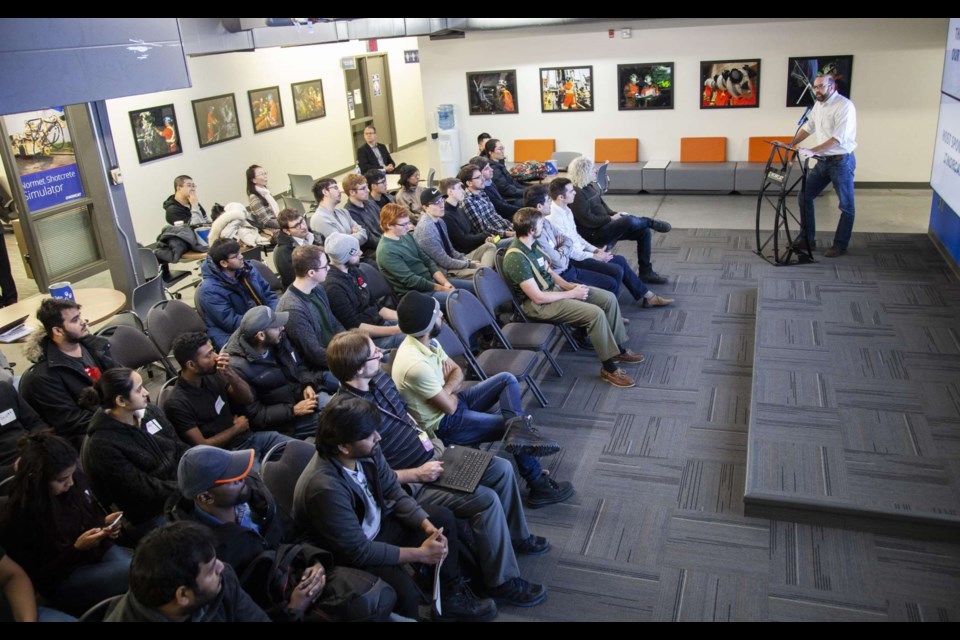One might say it was reminiscent of those early days of NASA when the best and brightest minds were brought together to look at how to send men to the moon and bring them back to Earth again.
In Sudbury, some of the best and brightest minds in computer science crowded into the classrooms at the NORCAT centre Jan. 17-19 to look at doing something a bit more down to Earth – how to operate everyday mining equipment through artificial intelligence and robotics.
The event was the Hard-Line Machine Learning Hackathon, sponsored by Hard-Line, an international leader in mine automation and remote-control technology based in Sudbury. Hard-Line already employs most of the best and brightest minds in this discipline, but it doesn’t hurt to bring in a fresh outlook with a hackathon.
“Essentially, it’s when a group of people get together to solve a problem,” said Felicia Brunelle, the event organizer and Hard-Line's vice-president of business development.
“This was a great opportunity to showcase Sudbury as an innovation hub,” she added. “We’ve been working to do what we can to solidify or enhance Sudbury’s reputation as the tech leader, particularly in mining technology.”
From a Friday through to a Sunday, for 42 hours, more than three dozen computer experts hunched over their laptops in groups and as individuals to find solutions.
Brunelle said there were two specific challenges. One involved using computer vision to identify the operation of a hydraulic rockbreaker, a common tool in Northern Ontario mines. Part of the challenge was identifying where the rockbreaker arm was located in relation to the grizzly – the metal grate over the ore pass – since all the broken rock has to be pushed through the grizzly.
“So you’re using computer vision and machine learning to give the computer an algorithm to learn where these things are, without human intervention,” Brunelle explained.
The second challenge was using reinforcement learning to control an autonomous mining vehicle, like an LHD (load-haul-dump scooptram). Brunelle said this is the sort of thing Hard-Line does all the time, “but we kind of put it out there to see what other solutions, or what the participants would take to come to the same conclusions.”
The hackathon sought out computer enthusiasts and students from across the province.
“We wanted to show them what we do here in Sudbury, to show them what is happening in the mining industry, because we are not always thought of as the most high-tech industry.
“We thought this would be a fun way to get a group of people, machine learning enthusiasts particularly, which is a fairly nascent science that changes very rapidly. Things are changing in machine learning every day. So this is artificial intelligence and computer vision and all of these things,” said Brunelle.
The exercise was a success.
“Absolutely, we were overwhelmed and pleased by what was brought to the table. I think that the opportunity to collaborate was really important. We made great connections with people,” said Brunelle.
“We got a better idea of the different programs being offered in the province that lend itself to machine learning because some of the participants came from programs we really didn’t expect,” she added.
Another unexpected turn was that no two teams took the same approach to solving the challenges, said Brunelle.
As a part of the event, all the solutions were assessed and tested by Hard-Line; the winning participants were awarded prizes consisting of a high-end graphics cards.
Brunelle said given the success of this event, it is likely that Hard-Line would host another hackathon.
“We’ve had all kinds of people from around Ontario reaching out and offering to collaborate with us on another hackathon in the future.”
This story origially appeared on SudburyMiningSolutions.com.




